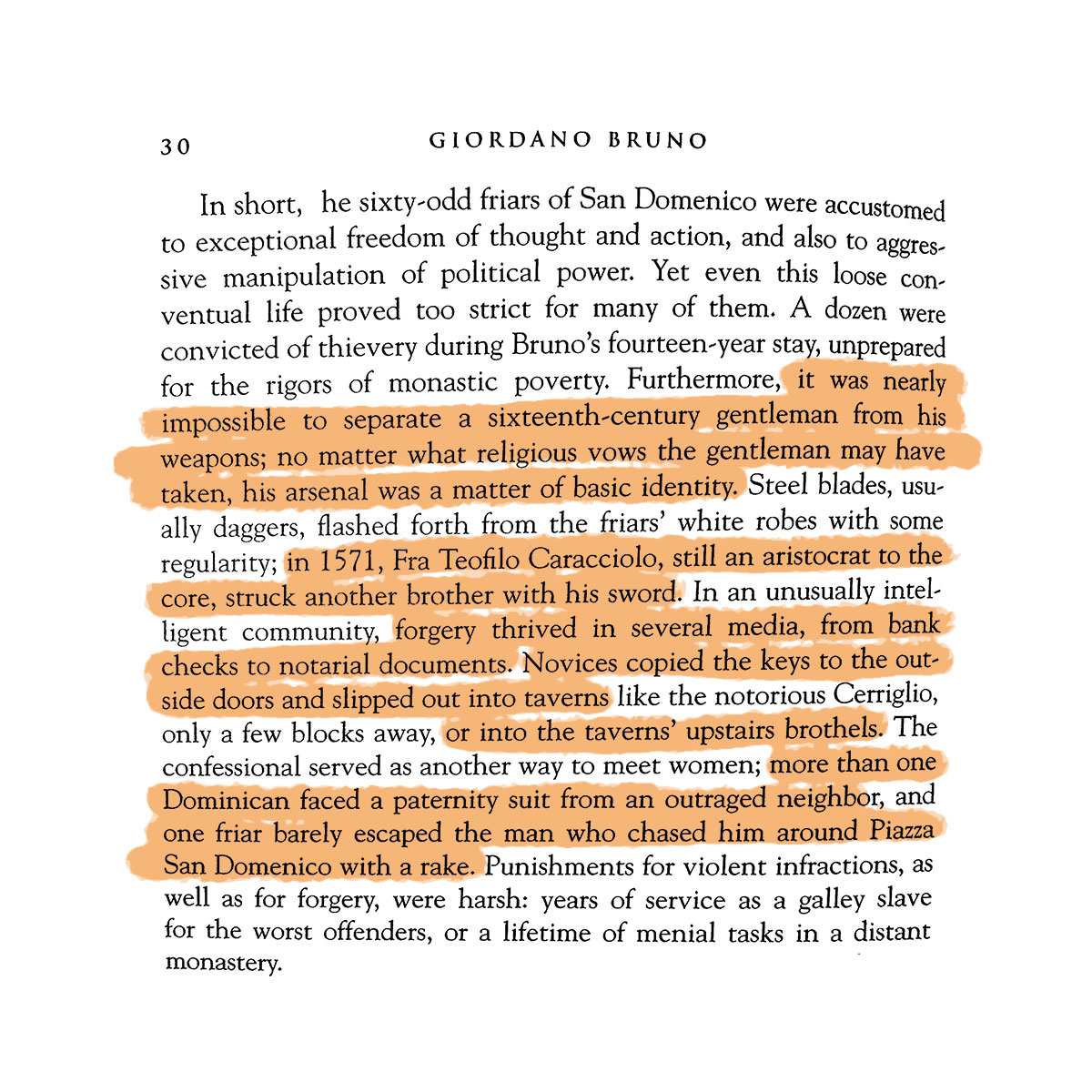
The Ne’er-Do-Well Neapolitan Dominicans of the Late Renaissance
Sorry I’ve been missing lately! Professional work commitments have kept me busy – and then for the last week I’ve been waylaid by some sorta chest infection that’s still got me down.
(In fact, I’m still living my best life coughing up my lungs from the couch.)
However, I’m getting some reading in, particular a biography of 16th century Italian philosopher and cosmological theorist Giordano Bruno (1548–1600). Proponent of an infinitely sized universe complete with a multitude of planets, it was his heretical theology that would see him burned at the stake in 1600.
— —
🙏History, art, & gaming from the Renaissance Netherlands & Europe’s long, late 16th century: 1549-1619
☙ facebook.com/rebelsorbeggars
☙ instagram.com/rebelsorbeggars
☙ rebelsorbeggars.com
— —
But before that, he was a rabble-rousing young man in a friary full of knavish and ne’er-do-well Dominicans in Naples. Get a load of this account of their shenanigans:
“…the sixty-odd friars of San Domenico were accustomed to exceptional freedom of thought and action, and also to aggressive manipulation of political power. Yet even this loose conventual life proved too strict for many of them. A dozen were convicted of thievery during Bruno’s fourteen-year stay, unprepared for the rigors of monastic poverty. Furthermore, it was nearly impossible to separate a sixteenth-century gentleman from his weapons; no matter what religious vows the gentleman may have taken, his arsenal was a matter of basic identity. Steel blades, usually daggers, flashed forth from the friars’ white robes with some regularity; in 1571, Fra Teofilo Caracciolo, still an aristocrat to the core, struck another brother with his sword. In an unusually intelligent community, forgery thrived in several media, from bank checks to notarial documents. Novices copied the keys to the out-side doors and slipped out into taverns like the notorious Cerriglio, only a few blocks away, or into the taverns’ upstairs brothels. The confessional served as another way to meet women; more than one Dominican faced a paternity suit from an outraged neighbor, and one friar barely escaped the man who chased him around Piazza San Domenico with a rake. Punishments for violent infractions, as well as for forgery, were harsh: years of service as a galley slave for the worst offenders, or a lifetime of menial tasks in a distant monastery…”

Prof. Ingrid Rowland’s biography is an enjoyable, easy read. I’d recommend it:
